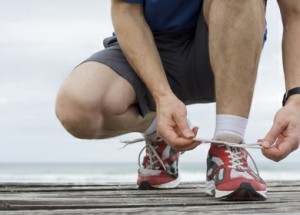
Run, run as fast as you can……….. nope, not necessary. Most people don’t have an excuse to not get moving. If you can walk, you can move, and if you can walk you can probably walk briskly.
According to a study out of Lawrence Berkeley National Laboratory, Life Science Division in Berkeley, California, walking at a rapid pace can reduce the risk of diabetes, hypertension and elevated cholesterol as effectively as running can.
Researchers took a look at over 30,000 runners and over 15,000 walkers. The study results demonstrated that brisk walking and high intensity running had the same impact on blood pressure, diabetes, and cholesterol. If the amount of energy spent in each group was equal, so were the benefits.
Where runners end up benefiting is in the fact that they usually do double the work in an hour that walkers do. However, these findings do clearly point to the advantages of both running and walking. You don’t have to be a marathon runner to benefit either; a slow and steady jog gets it done.
If running is not your cup of tea, be sure that you are getting in at least 10,000 steps daily for full benefit. Ideally, to get the best walking workout, you should be able to carry on a conversation while you walk but have a hard time singing. Adding walking poles increase calories burned and help those with stability issues, as well.
High Intensity Training
 The answer to those stubborn love handles or belly bulge is found in high-intensity interval training (HIIT). It is not nearly as complicated as it sounds. HIIT is characterized by short bursts of maximum output, usually between 20 to 40 seconds, followed by a recovery period.
The answer to those stubborn love handles or belly bulge is found in high-intensity interval training (HIIT). It is not nearly as complicated as it sounds. HIIT is characterized by short bursts of maximum output, usually between 20 to 40 seconds, followed by a recovery period.
Calculate your maximum heart rate by subtracting your age from 220. During the maximum output period, your heart rate should be somewhere between 70% and 85% of your maximum heart rate. Great exercises to consider for this type of training are kettlebells, skipping, boxing, rowing or even sprinting.
This type of workout burns a tremendous number of calories, which leads to stubborn fat loss. Beginners should start out slowly to avoid injury and train only 2-3 times a day, aiming for 10 reps of work with a work period of 40 seconds and a rest period of 60 seconds.
-The Alternative Daily

